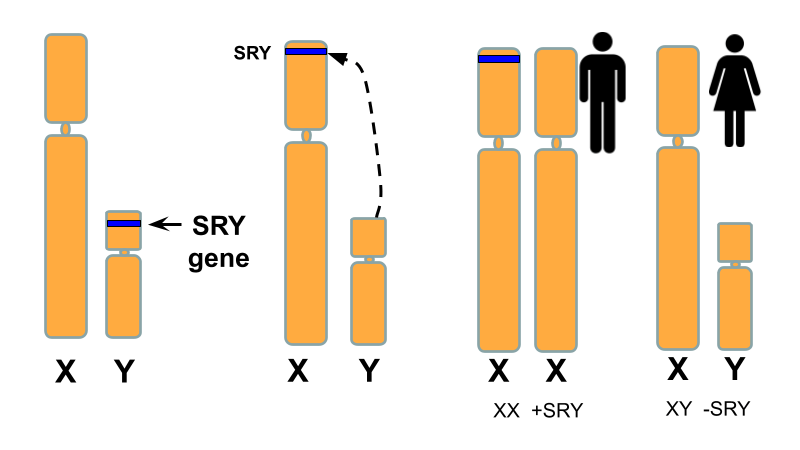Case Study on Meiosis: SRY not SRY
Open in Google Slides.
1. What is the main question of the case?
2. What is the difference between a diploid cell and a haploid cell?
3. What characteristics distinguish human males from females?
4. What is the difference between anatomy and physiology with regards to tests that would be used to determine sex?
5. What is a karyotype? Males have how many autosomes and what sex chromosome combination?
6. What is sexual dimorphism?
7. What is the purpose of meiosis? How many gametes are created during meiosis?
8. Sketch meiosis showing the main events and the resulting gametes.
9. Describe how independent assortment and crossing-over ensures that each gamete is different.
10. How is sex determined in humans, based on chromosomes?
11. What is nondisjunction?
12. What is Klinefelter syndrome?
13. What is the chromosome theory of inheritance?
14. What is the SRY gene?
15. What happens if an XY individual is missing the SRY gene?
16. What happens if an XX individual has a SRY gene?
17. How is it possible that the SRY gene could end up on the X chromosome or be missing from the Y chromosome?
18. If a person is 46, XY -SRY , is the person male or female?
19. What is gonadal dysgenesis?
20. What is androgen insensitivity syndrome (AIS)?
Synthesis - Claim, Evidence Reasoning
Consider the following question: “The Y chromosome is an accurate indicator of a person’s external sex organs.”
Do you agree or disagree with this statement? State a CLAIM that addresses the question and support that claim with EVIDENCE and REASONING from the case.
Instructor Notes: This page can be used during class to help students keep track of the main concepts in the case, or students can just take notes during the presentation/discussion and write the synthesis essay at the end.
Overall Explanation: students should be able to articulate that during meiosis, chromosomes pair up and exchange information. Genes located on one chromosome can move (translocate) to another chromosome. This can cause a problem is the SRY gene moves, which could either create an XY -SRY individual (female) or an XX +SRY individual who will be male. The position taken should be based on the evidence of the case, answering the central question about whether the GENE is more important than the chromosome. Though a position statement can not by technically incorrect, evidence is more compelling to allow competitors as long as the SRY gene is not active.
In the case of Santhi, who revealed she has andogen insensitivity, the answer is not as obvious. AIS can have moderate forms, where the individual does have some masculine traits and increased levels of testosterone. A case could be made that increased testosterone would be a disqualifier.
What about SWYER syndrome?

Current News: 2024 Olympics

